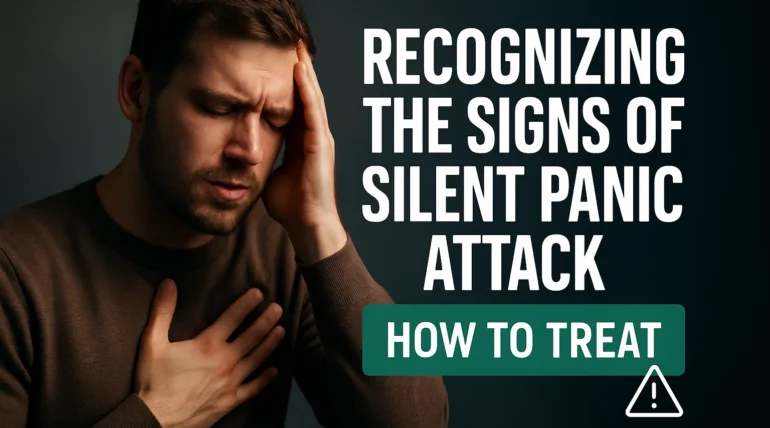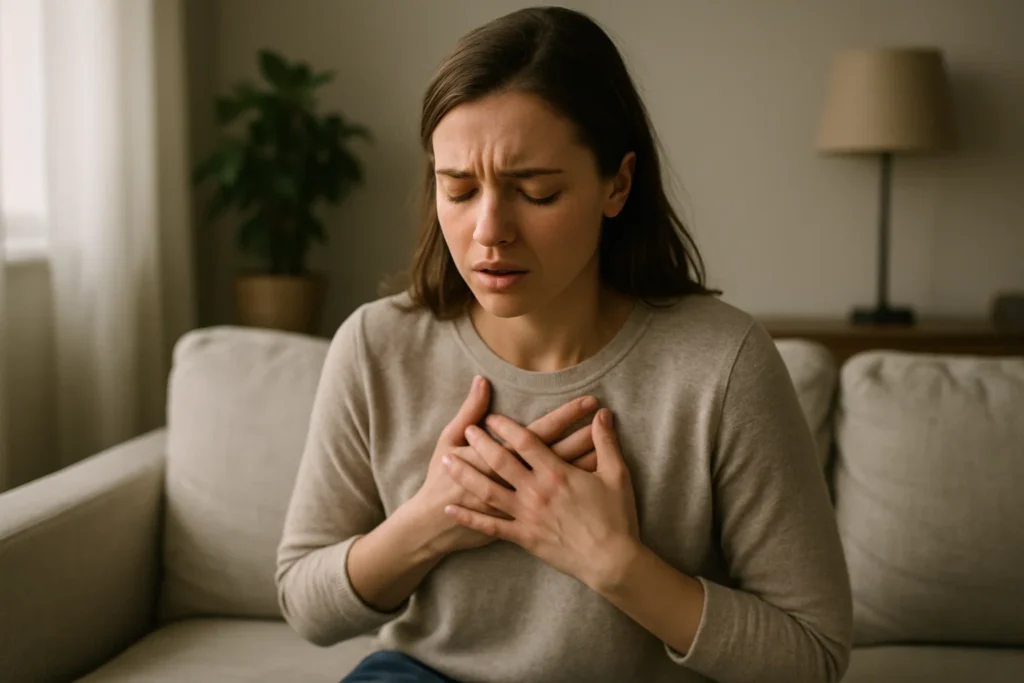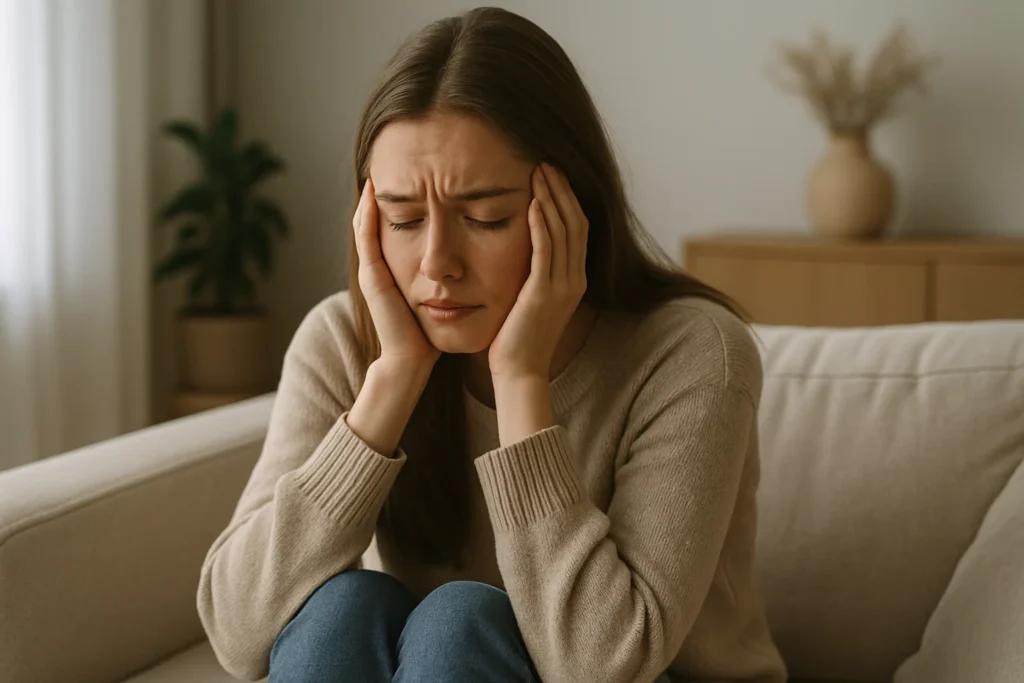
Silent panic attack is a form of panic attack that occurs without any noticeable external manifestation, as most people would expect. It is opposite to a normal panic attack, which may be defined by such evident symptoms as trembling, sweating or gasping. However, a silent panic attack is mostly internal. You might feel that your heart is beating, your chest is tightening, or intense fear, but to the outside world, you might come across as a calm person. This may lead to silent panic attacks being especially confusing and hard to detect.
What is a Silent Panic Attack?
Simply put, a silent panic attack is a storm within, except that there are no typical signs. It is the actual emotions, the physical feelings of a panic attack, the anxiety, fear and discomfort and it is repressed. Friends, family, or coworkers may not notice that you are in trouble because you are not exhibiting classic symptoms such as crying or shaking, which makes you feel lonely.
Signs and Symptoms
A silent panic attack has very real physical and emotional effects, even though no one may be able to notice them:
- Fast pulse or racing pulse
- Chest Tightness/chest Pressure
- Labour or inability to breathe or dyspnea
- Light-headedness or Dizziness
- Other symptoms: toes or fingers numb or tingling in toes or fingers
- Detachment to self or the world, also referred to as depersonalization or derealization
- To a large extent, panic attacks or doom premonitions
- Distraction, distraction of thoughts
- Disturbance or inner disturbance
These symptoms are so silent to an extent that they can be ignored as being stressed or a bad day. They are, nevertheless, just as debilitating and stressful as a more serious panic attack.
What are the causes of Silent Panic Attacks?
The silent panic attacks are caused by the same reasons as the normal panic attacks:
- Chronic stress or stress level
- Historical trauma/anxiety disorder
- Family history or genes of anxiety disorder or panic
- Some of the personality traits include: A perfectionist, a very sensitive one
- caffeine/alcohol or drug withdrawal
- Physical health conditions that bring about panic-like conditions
- Adverse life experiences or stressors in the environment
This knowledge of the triggers can make you more conscious of the times that you are in danger
What You Can Do to Manage or Stop a Silent Panic Attack
The only way to deal with silent panic attacks is by being aware of what they are and implementing various self-care methods, while also seeking the help you need from professionals. Here’s a detailed approach:

1. Recognize the Signs Early
Silent panic attacks may not have clear physical symptoms, so it is crucial to identify your internal warning signs. These might include:
- Sudden racing pulse, which is not caused by something external
- Extreme panic or fear
- Inability to focus or being too fast-witted
- Giving a sense of alienation to the self or the environment
- The tightness of the chest or shallow breathing
It is possible to know your patterns to identify these symptoms early.
2. Practice Controlled Breathing
Slow and deep breathing is one of the most effective tools against panic attacks. Try this:
- Breathe in slowly through your nose to a count of 4
- Hold your breath gently for a count of 4
- Exhale slowly through your mouth for a count of 6
- Repeat several times until you feel calmer
The technique will also enable you to control your autonomic nervous system as well as minimize physical symptoms of panic.
3. Grounding Techniques
Grounding exercises can return your focus to the here and now, taking it away from the thoughts that trouble you:
- Observe and identify five things that you can see
- Four things near you that you can touch
- Acknowledge three things you hear
- List two things you can smell.
- Feel one thing you can taste
These methods are grounded in your reality and do not make you feel detached.
4. Progressive Muscle Relaxation
Contractions and relaxations of your various muscles help you dissipate any internal tension. Focus on letting out the built-up stress and work your way through the toes and upwards on your body.
5. Challenge Negative Thoughts
Catastrophic or irrational thinking often fuels silent panic attacks. Mindfulness practice or cognitive-behavioral tactics like:
- Recognize and label anxious thoughts
- Question their accuracy ( Is this really true?)
- Swap them out for balanced, peaceful alternatives
- This reduces emotional escalation.
6. Lifestyle and Prevention
The process of decreasing the overall sources of anxiety is called long-term management:
- Limit caffeine, alcohol, and nicotine, as they can cause you to be more nervous
- Take quality sleep as a priority
- Include physical activity that will help to get rid of tension and enhance mood
- Relaxation, e.g., mindfulness meditation, yoga, or hobbies
7. Seek Professional Support
If you have silent panic attacks regularly or if they are interfering with your life:
- In particular, CBT (Cognitive-behavioral therapy) is proven to work for panic disorders
- Prescribed medication (if applicable) from a healthcare provider.
- Attending support groups or teaching your loved ones what you are going through
Professional guidance will deliver you exclusive strategies and support based on your current situation.
How Silent Panic Attacks Are Different from Regular Panic Attacks

The main difference is visibility. Many panic attacks come on seemingly with visible signs such as trembling, sweating, or crying. While Silent panic attacks keep all that intensity inside. This can lead to delays in receiving help and further escalate the chances of anxiety becoming more chronic if not managed well. Silent panic attacks and normal panic attacks both have the same feeling of intense fear. However, they differ greatly in how those symptoms manifest outwardly.
| Aspect | Regular Panic Attack | Silent Panic Attack |
| Physical Symptoms | Visible signs like trembling, sweating, heavy breathing, shaking, and crying | Minimal to no visible signs; person appears calm |
| Outward Expression | Obvious distress, inability to function normally | Internalized distress; outwardly composed or normal |
| Recognition by Others | Easily noticed by others | Hard to detect, often unnoticed by others |
| Common Symptoms | Heart palpitations, hyperventilation, chest pain, sweating | Racing heart, chest tightness, dizziness, but no outward signs |
| Duration | Typically lasts a few minutes | Can vary but often similar timing |
| Emotional Experience | Intense fear often accompanied by an urgent need to escape | Equally intense fear but more internalized |
| Impact | Immediate interruption of activity | May continue activities despite internal distress |
Your Path Forward
One can say that silent panic attacks are difficult to define or even notice, as they are defined by the lack of visual signs. But you need to understand what your mind and body are saying in such cases. As soon as you learn how to recognize these hidden symptoms, you will be in a position to do something as early as possible and apply some of the soothing techniques that will make the symptoms less severe.
The silent panic attacks may be addressed with the assistance of self-management techniques and professional assistance in case of necessity. The process of regaining control and overall mental health improvement may be necessary through the use of therapy, lifestyle modifications, and mindfulness practices.
Remember that you do not have to tackle this alone. When you require a person to help and assist you in your mental health process, Minds Over Matter is where you will take the next step towards permanent wellness and peace of mind.
FAQs
A silent anxiety attack is quite similar to a silent panic attack but it is typically less severe. It is characterized by inner emotions of worry without physical manifestations.
You can feel detached, pounding heart, chest pain or a rush of fear even when you seem to be calm on the outside.
They are not physically harmful, yet they can be quite upsetting and can influence your psychological comfort when disregarded.
Yes, silent panic attacks can worsen in case they are not addressed in case under stress and anxiety.
This can be assisted by breathing slowly, deliberately, staying in the present moment, and thinking of thoughts that are calming thoughts.
Silent anxiety is the constant low anxiety that has no symptoms and silent panic attacks are the panic attacks that happen suddenly and severely, but not visibly.


